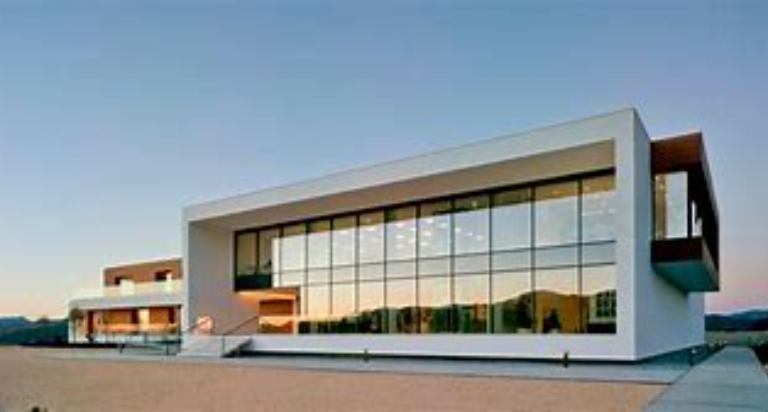
Wine Time - Murcia Region
Wine Regions in Murcia. Yes, the Murcia region in Spain is known for its wine production, particularly robust red wines, home to three Denominación de Origen (DO) appellations, some key details:
Casa Rojo is a renowned winery located in the Región de Murcia, Spain. Founded in 2009 by winemakers José Luis Gómez and Laura Muñoz-Rojo, Casa Rojo is dedicated to producing high-quality wines that reflect the unique characteristics of their vineyards. Their vineyards are situated in two key locations: the Ribera del Duero region and the northern slopes of the Sierra de la Pila Natural Park in Murcia. They focus on crafting wines with a balance of tradition and innovation, using grapes like Tempranillo and Monastrell. Casa Rojo offers a variety of wines, including reds, whites, and rosés, and they emphasize the importance of balance and quality in their winemaking process. You can visit their winery in Jumilla, where they offer tours and tastings to share their passion for wine with visitors.
Visit the Casa Rojo website for information on the wine and visitng the Bodega: https://www.casarojo.com/en/
Jumilla: Known for its bold, fruit-driven red wines, primarily made from the Monastrell grape.
Grape Varieties
Monastrell (Mourvèdre): The dominant grape variety in Jumilla, accounting for around 80% of the vineyards. Monastrell is known for producing rich, full-bodied red wines with high tannin content and deep color.
Wine Styles
Red Wines: Jumilla’s red wines are typically robust and fruit-driven, with flavors ranging from lively fruits and earthy notes when young to complex aromas of matured fruit, coffee, and oak spices with extended barrel aging1. These wines often have high polyphenol levels, good acidity, and a deep purple-red color.
Terroir and Climate
Climate: The region has an arid, continental climate with hot, dry summers and cold winters. Summer temperatures can reach up to 40°C (104°F)1.
History and Modernization
Jumilla has a long history of winemaking, dating back to Roman times. The region gained significant attention in the late 19th century when the phylloxera plague struck neighboring France, boosting demand for Jumilla wines1. Despite being hit by phylloxera in 1989, the region used this opportunity to modernize and focus on producing lighter, more elegant wines.
Yecla: Located in the northern part of Murcia, this region also focuses on Monastrell, producing wines with deep color and high tannin content, a small wine region, renowned for its rich, dark, fruit-driven red wines, the unique climate that combines coastal Mediterranean influences with the harsh continental climate of Spain’s interior.
Grape Varieties: About 80% of Yecla’s vineyards are planted with Monastrell. Other varieties include Garnacha, Tempranillo, Cabernet Sauvignon, Merlot, and Syrah for reds, and Chardonnay, Macabeo, and Airén for whites.
Wine Styles: Yecla produces a variety of wines, including still whites, rosados (rosés), reds, sparkling, and fortified wines. The red wines are often well-structured and can be aged for several years.
Notable Producers: Familia Castaño and Bodegas La Purísima are two prominent producers in Yecla.
Bullas: Situated in the western part of the province, Bullas produces a variety of wines, including reds, whites, and rosés1.
Grape Varieties: The region primarily grows Monastrell, which accounts for about 60% of the wine production1. Other varieties include Garnacha, Syrah, Tempranillo, Cabernet Sauvignon, Merlot, and Petit Verdot for reds, and Macabeo, Airén, Chardonnay, Malvasia Blanca, Muscat, and Sauvignon Blanc for whites12.
Wine Styles: Bullas is renowned for its young, fresh, and lively red and rosé wines, often enjoyed joven (young)1. These wines are typically fruit-forward and expressive of the local terroir1.
Terroir: The region’s vineyards are situated at altitudes between 500 and 810 meters above sea level, benefiting from limestone and chalk soils that provide excellent drainage1. The climate is characterized by hot, dry summers and cooler winters, with occasional frosts1.
Notable Wineries: Some well-known wineries in Bullas include Bodega Balcona, Bodega Monastrell, and Bodegas Del Rosario345.
Bullas also offers a rich wine tourism experience with its Ruta del Vino de Bullas, where visitors can explore vineyards, participate in wine tastings, and learn about the region’s winemaking traditions6
Grape Varieties Found In Murcia
Monastrell (Mourvèdre): The most prominent grape in the region, known for producing rich, full-bodied red wines1.
Tempranillo: Another popular red grape variety in Murcia1.
Syrah, Cabernet Sauvignon, and Merlot: These international varieties are also grown and used in blends1.
Macabeo, Airen, and Merseguera: These are some of the white grape varieties cultivated in the region1.
Murcia’s diverse climate and soil conditions contribute to the unique characteristics of its wines, making it a fascinating region for wine enthusiasts to explore.
